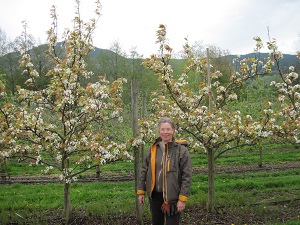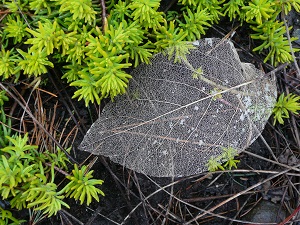 As an intern at Cloud Mountain Farm Center I have the privilege to consider the big picture of dynamic food systems, sustainability and community. The focus on long-term well-being of the farm and the watershed it inhabits must consider soil health as the backbone of management practices if sustaining community and ecosystem health is a guiding principle. Healthy soil supports vigorous plants that can resist pest and disease pressure and produce abundant, high quality food. Without healthy soil, all fixes are necessarily temporary.
As an intern at Cloud Mountain Farm Center I have the privilege to consider the big picture of dynamic food systems, sustainability and community. The focus on long-term well-being of the farm and the watershed it inhabits must consider soil health as the backbone of management practices if sustaining community and ecosystem health is a guiding principle. Healthy soil supports vigorous plants that can resist pest and disease pressure and produce abundant, high quality food. Without healthy soil, all fixes are necessarily temporary.
So, how can we create and maintain soil health? The National
Resources Conservation Service presents four basic management practices to improve soil health:
Manage More by Disturbing Soil Less
All forms of disturbance whether physical (i.e. tillage), biological (i.e. overgrazing) or misuse of chemical inputs diminish habitat for soil microbes.
Diversify Soil Biota with Plant Diversity
A diversity of plant carbohydrates is required to support the diversity of soil microorganisms in the soil.
Keep a Living Root Growing Throughout the Year
Healthy soil is dependent upon how well the soil food web is fed. Providing plenty of easily accessible food to soil microbes helps them cycle nutrients that plants need to grow. Sugars from living plant roots, recently dead plant roots, crop residues, and soil organic matter all feed the many and varied members of the soil food web.
Keep the Soil Covered as Much as Possible
Soil cover conserves moisture, reduces temperature, intercepts raindrops (to reduce their destructive impact), suppresses weed growth, and provides habitat for members of the soil food web that spend at least some of their time above ground. Learn more here:
Natural Resource Conservation Service
Conventionally managed orchards control weeds by spraying herbicide about five times in a growing season, leaving the soil bare below the trees. Test plots at Cloud Mountain have just been seeded with a diverse mixture of flowering plants chosen to be attractive to pollinators and beneficial predatory insects:
 Mountain Phlox (Linanthus grandiflora)
Mountain Phlox (Linanthus grandiflora)
Winter Chervil (Anthrisaus cerefolium)
Golden Alexanders (Zizea aurea)
Poached Egg Flower (Limnanthes douglasii)
Farewell-to-Spring (Clarkia amoena)
Tidy Tips (Layia platyglossa)
Prairie Aster (Aster tanacetifolia)
Wild Mint (Mentha arvensis)
Anise Hyssop (Agastache foeniculum)
Western Yarrow (Achillea millefolium occidentalis)
Some will self-sow and provide winter cover for the soil, and some perennials will remain from year to year, beginning an understory layer to feed the life in the soil.
More to come on the challenges of weeds, monitoring rodents and some pictures of blooms!


It’s really a great and useful piece of information. I am happy that you just shared this useful info with us. Please keep us up to date like this. Thanks for sharing.|